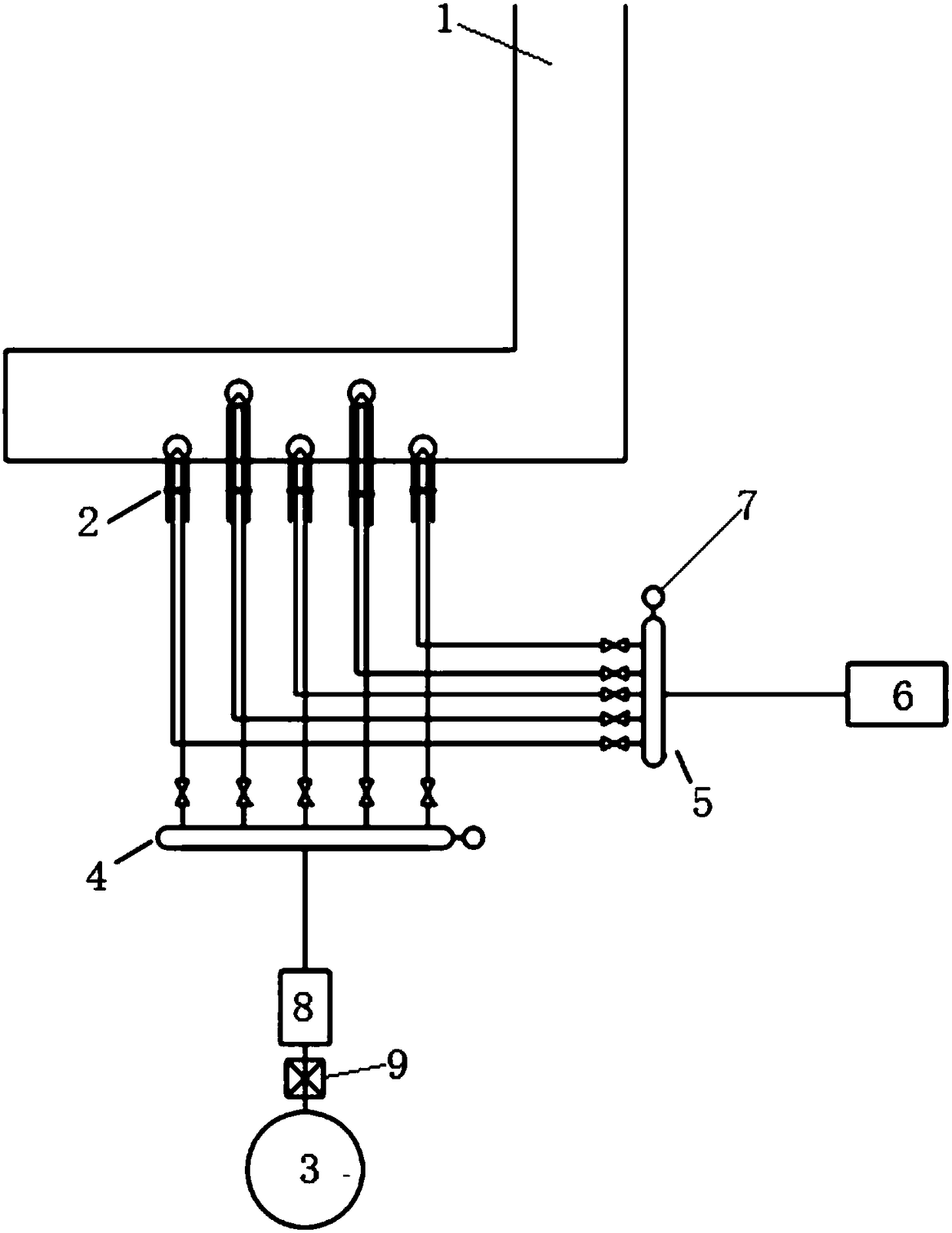Low-temperature denitration solution and method
A low-temperature denitrification and solution technology, applied in the field of denitrification process, can solve the problems of high infrastructure costs and operating costs, little progress, increased energy consumption, etc.
- Summary
- Abstract
- Description
- Claims
- Application Information
AI Technical Summary
Problems solved by technology
Method used
Image
Examples
Embodiment Construction
[0021] The technical solutions of the present invention will be further elaborated below in conjunction with the accompanying drawings and examples, and the examples and accompanying drawings are only for explanation and not intended to limit the protection scope of the present invention.
[0022] The proportioning of the low-temperature denitrification solution in the present embodiment is as follows:
[0023] 1.3%-2.0% sulfate, sulfate compounds such as ammonium sulfosulfate, ammonium carbamate or carbon disulfide can be used.
[0024] 8%-10% fusel oil ester, fusel oil can use such as ethyl acetate, diethyl carbonate or cyclobutyl polyacid ethyl ester.
[0025] 98% tetramethylthiuram, tetramethylthiuram can be used such as tetraethylammonium chloride, hexamethylphosphoric triamide or halogenated hydrocarbons
[0026] The pH value is between 5-7.
[0027] The above components are mixed and stored in storage tanks for flue gas denitrification.
[0028] The equipment used fo...
PUM
 Login to view more
Login to view more Abstract
Description
Claims
Application Information
 Login to view more
Login to view more - R&D Engineer
- R&D Manager
- IP Professional
- Industry Leading Data Capabilities
- Powerful AI technology
- Patent DNA Extraction
Browse by: Latest US Patents, China's latest patents, Technical Efficacy Thesaurus, Application Domain, Technology Topic.
© 2024 PatSnap. All rights reserved.Legal|Privacy policy|Modern Slavery Act Transparency Statement|Sitemap

